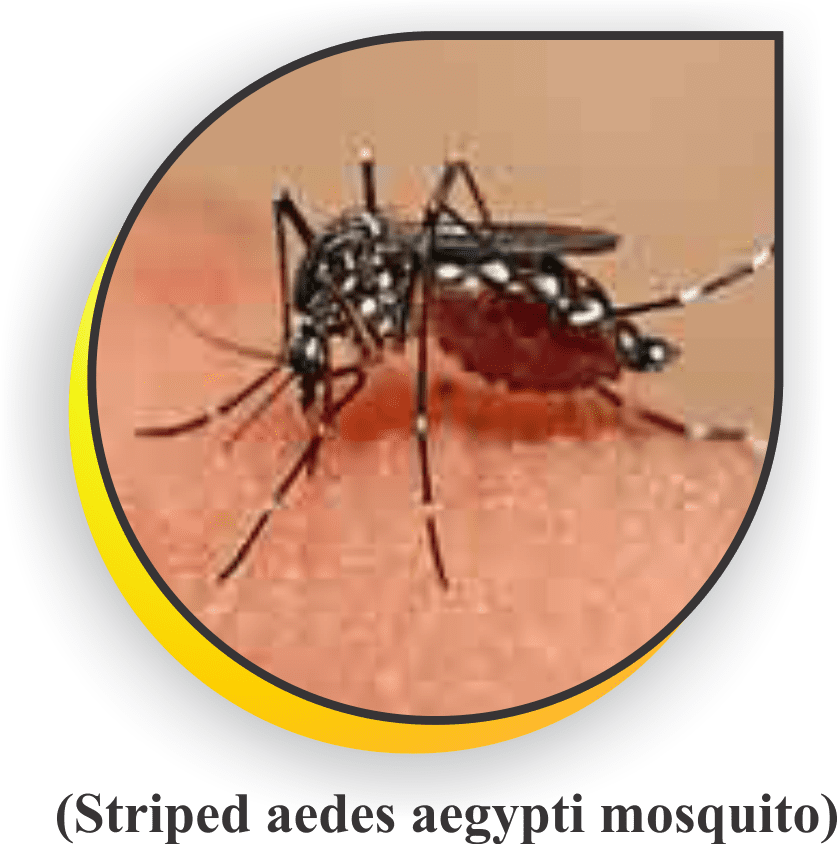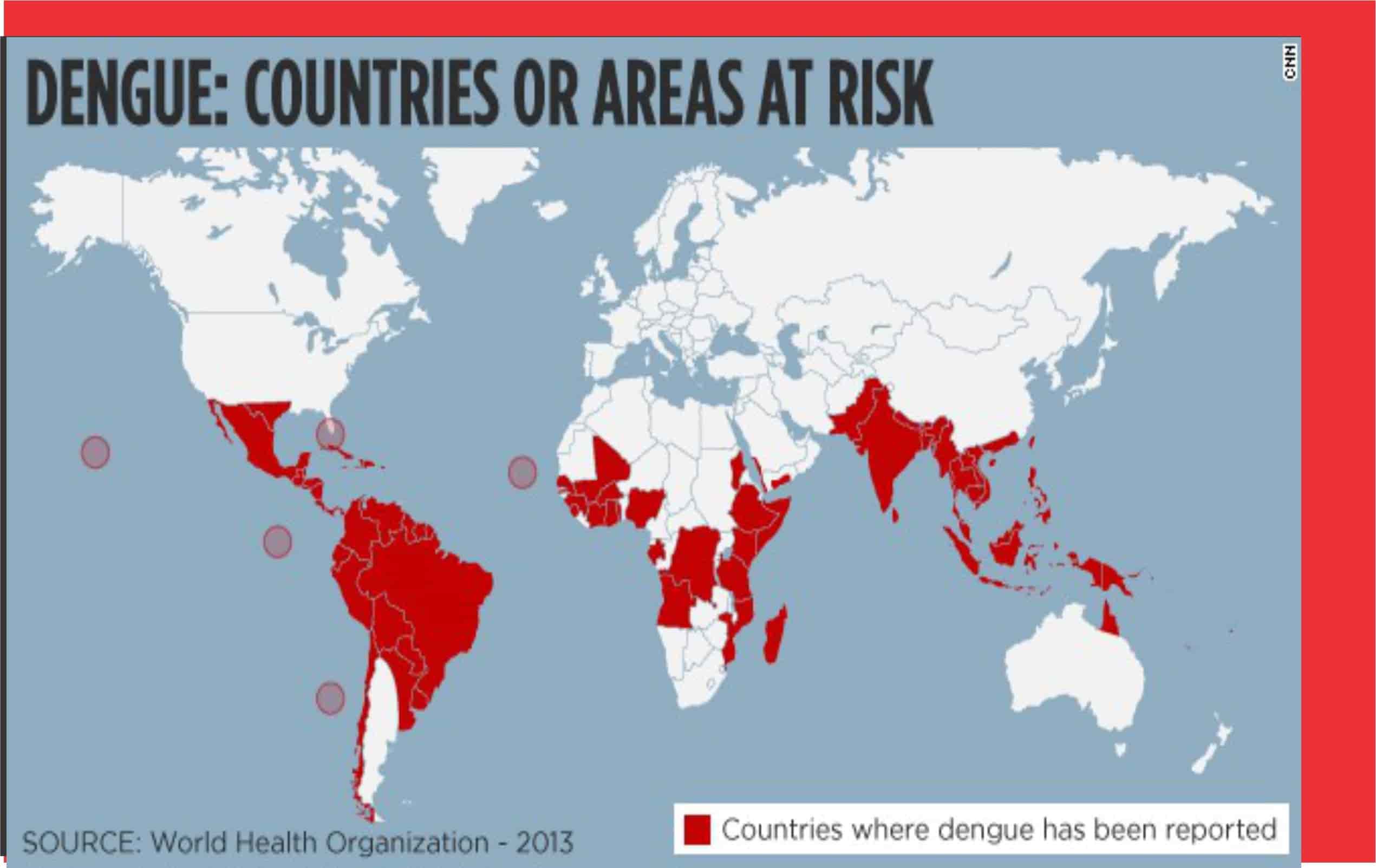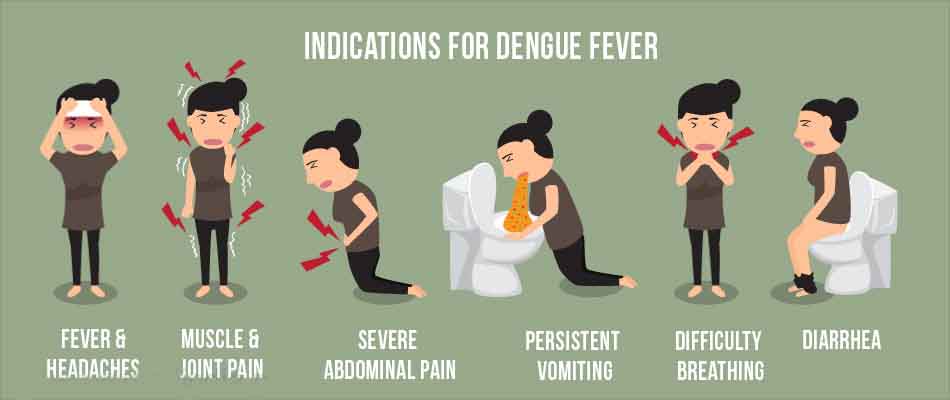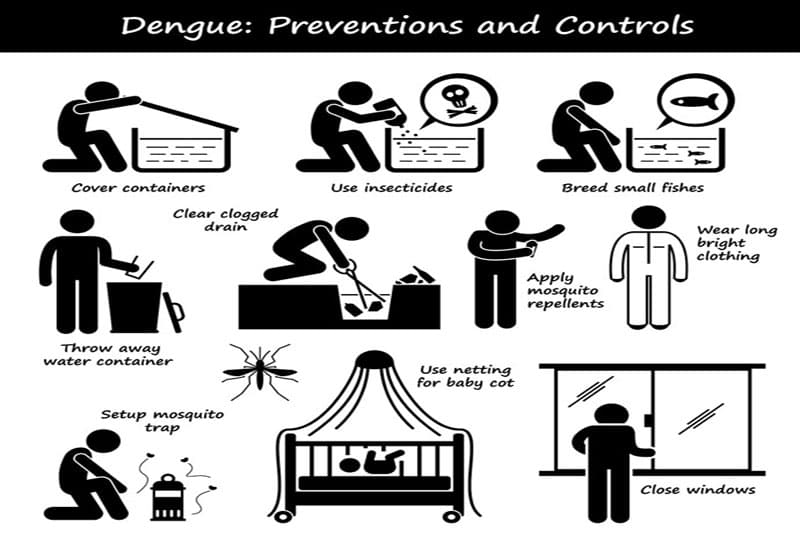Dengue fever (DF) also known as 'Breakbone Fever' is a mosquito borne disease caused by a family of closely related viruses. It is a tropical endemic disease. In some cases it can turn into life threatening dengue hemorrhagic fever (DHF).
CAUSES AND TRANSMISSION
 It is caused by dengue fever virus (DENV). It is a RNA virus belonging to Flaviviridae family. Four strains of this virus has been identified, and referred as DENV-1, DENV-2, DENV-3 and DENV-4. A fifth type was discovered in 2013.
It is caused by dengue fever virus (DENV). It is a RNA virus belonging to Flaviviridae family. Four strains of this virus has been identified, and referred as DENV-1, DENV-2, DENV-3 and DENV-4. A fifth type was discovered in 2013.
Degue is not contagious. It cannot transfer from person to person. It requires vector. This dengue virus is transmitted by a vector - Aedes mosquitoes. It is mainly transmitted by A.aegypti. Other species which transmits the virus is A.albopictus.
The virus is mainly transmitted from an infected aedes mosquito which has previously bitten a dengue infected human. It takes 4-10 days for the virus to incubate inside the mosquito. They typically bite early morning or evening.

DENGUE CASES AND AREA OF RISK
Dengue has grown dramatically in the past few decades. According to WHO estimates, 390 million dengue infections are seen per year out of which 96 million results in illness or manifest clinically. Another estimate shows that 3.9 billion people, in 128 countries, are at risk of infection with dengue viruses.

The areas at risk from dengue are tropical regions. Most cases are seen the tropical areas mostly seen in The Indian subcontinent, Southeast Asia, Southern China, Taiwan, The Pacific Islands, The Caribbean, Mexico, Africa, Central and South America (except Chile, Paraguay, and Argentina).
SYMPTOMS
The incubation period ranges from 3 – 14 days. The symptoms are usually seen from 15th day of mosquito bite.

- Sudden fever
- Severe headache especially behind the eyes
- Severe joint pain and muscle pain.
- Skin rashes
- Mild bleeding in nose bleed or gum bleeding.
- Nausea
- Vomiting
- Low white blood cells count
- High fever
- Damage to blood vessels and lymph nodes
- Enlargement of liver
- Failure of circulatory system
DIAGNOSIS
It is basically done on the basis of reported symptoms and physical examination. The earliest laboratory test is white blood cells count followed by low platelets and metabolic acidosis. 
The confirmatory dengue test is done by microbiological laboratory testing. Also, a blood test is done to check for the presence of viruses or antibodies against it.
In 2011, the U.S. Food and Drug Administration (FDA) approved a blood test called the DENV Detect IgM Capture ELISA to diagnose people with dengue fever.
PREVENTION
- The main method of prevention is to stop the transmission of virus through vector mosquito.
- Disposing of wastes in the right manner
- Properly covering stored water or emptying stagnant water.
- Spraying insecticides during the outbreak
- Using mosquito repellant creams and mosquito nets
